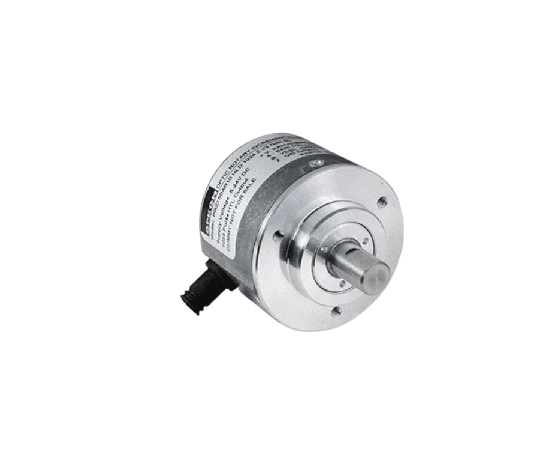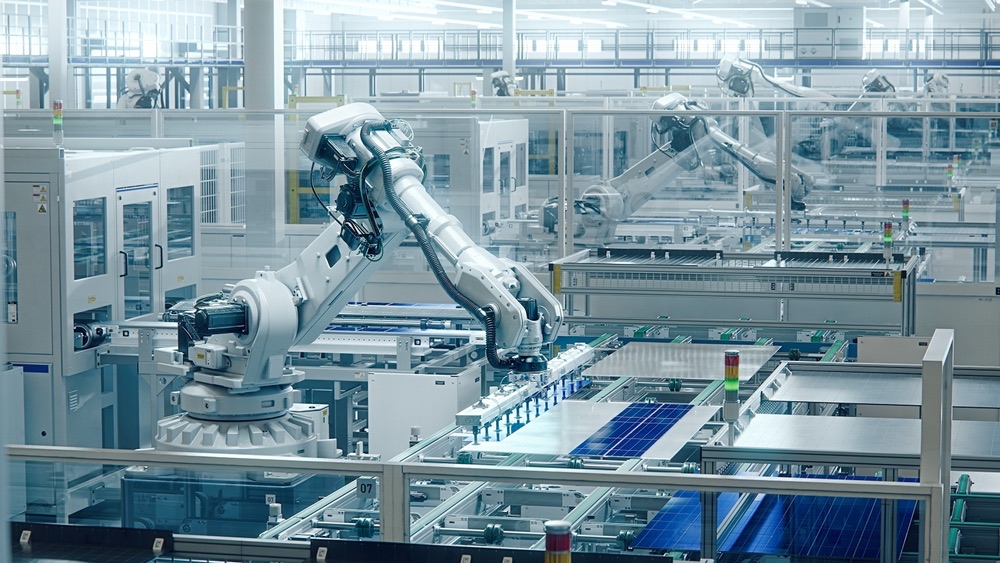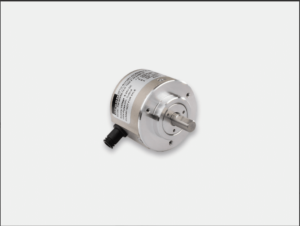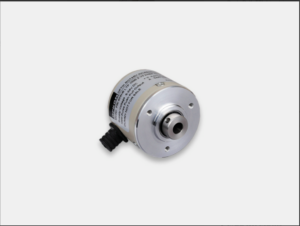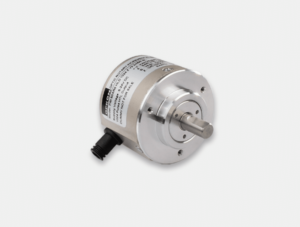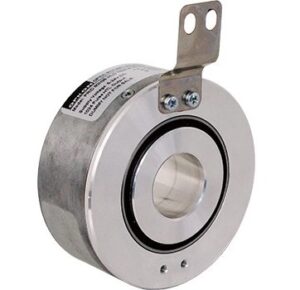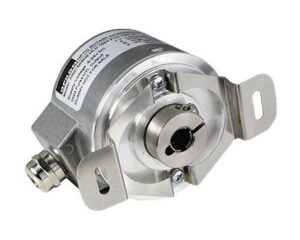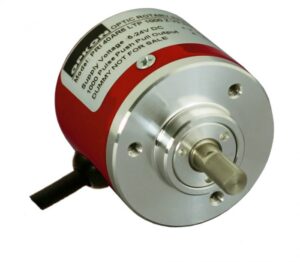What is an Incremental Encoder? Basic Definition An incremental encoder is a motion-sensing, electromechanical device that generates electrical pulses in response to linear or rotary…
What is an Incremental Encoder?
Basic Definition
An incremental encoder is a motion-sensing, electromechanical device that generates electrical pulses in response to linear or rotary movement. These pulses are counted by a controller to calculate parameters like speed, direction, and distance. The encoder typically outputs quadrature signals—two square waves labelled Channel A and B—which are 90 degrees out of phase, allowing direction detection. A third optional channel, Z or index pulse, provides a reference once per revolution for homing functions.
This type of encoder is widely used in industrial automation environments such as motor feedback systems, conveyor monitoring, and CNC machinery. Rotary incremental encoders and optical incremental encoders are commonly found in high-speed control applications, where feedback on motion is essential and reliable digital output is required to interface with motion control systems. such as motor feedback systems, conveyor monitoring, and CNC machinery. Rotary incremental encoders and optical incremental encoders are commonly found in high-speed control applications, where feedback on motion is essential. Linear incremental encoders, on the other hand, are used in applications where straight-line motion needs to be tracked precisely. Performance is often defined by pulses per revolution (PPR), which directly impacts resolution.
Rotary encoders are especially useful for angular position sensing, commonly installed in servomotors and gearboxes. Linear encoders serve precision applications like semiconductor manufacturing or coordinate measuring machines, converting linear displacement into electrical signals. These encoder types are trusted for precise measurement tasks that demand high resolution and repeatability.
Difference between Incremental and Absolute Encoders
Incremental encoders and absolute encoders differ in how they report position. An incremental encoder outputs pulses that represent relative movement. It doesn’t retain position after power-off, meaning systems require rehoming upon restart. This makes them ideal for applications where continuous motion tracking is sufficient and cost efficiency is important.
In contrast, an absolute encoder provides a unique digital output for each shaft position, maintaining exact location data even after power loss. This is crucial for applications like robotic arms or precision axis control where maintaining the absolute position of components is non-negotiable.
Incremental encoders are generally faster, simpler, and well-suited to tasks involving speed monitoring and direction sensing, especially in environments using servo motors, PLCs, and automated control systems. Their range of applications includes everything from factory automation to robotic systems and renewable energy equipment.
Incremental encoders do not inherently track absolute position, but they are often paired with systems or logic that recalibrate or rehome them to a known location to simulate absolute position awareness.
How Incremental Encoders Work
Pulse Signal Generation
Incremental encoders work by generating a series of electrical pulses as a shaft or linear scale moves. Internally, they contain a disc with evenly spaced lines or slots. As the disc rotates, a light source (in optical encoders) emits a light pulse through the transparent and opaque segments of the disc, which is then detected by an optical sensor. This produces a digital signal that corresponds to shaft rotations. or an optical sensor detects the alternating light and dark regions, generating a digital signal that corresponds to shaft rotations. These signals are counted to determine movement and direction of motion, functioning as a position counter within automation systems. This allows accurate tracking of incremental position changes from the initial position with every rotation, and also enables monitoring of the direction of rotation when needed., functioning as a position counter within automation systems. This allows accurate tracking of incremental position changes from the initial position with every rotation.. or a magnetic sensor (in magnetic encoders) detects these markings and converts them into electrical signals. These signals typically appear as square waves on Channels A and B, which are phase-shifted to enable direction detection—known as quadrature output.
The number of pulses per revolution (PPR) defines the resolution: the higher the PPR, the more precise the motion feedback. An optional third channel, the Z pulse or index pulse, outputs a single pulse per revolution, serving as a reference position that allows the system to recalibrate to a known location. allowing the system to identify a reference or home position. Both rotary encoders and linear encoders utilize this pulse-generation principle.
Component Structure
The internal structure of an incremental encoder generally includes a rotating shaft, a code disc, a sensing element (optical or magnetic), and signal conditioning electronics. The code disc is mounted on the rotating shaft and is marked with a repetitive pattern. As the motor shaft turns, changes in the pattern are detected and converted into electrical signals. with a repetitive pattern. As the shaft turns, the sensor detects the pattern and produces output signals in real-time.
Housing materials and build quality vary depending on the industrial application. For instance, compact incremental encoders are used in space-constrained systems, while heavy-duty encoders with IP67 protection are designed for harsh environments. Output signals are transmitted through M12 connectors or shielded cables to ensure signal integrity in electrically noisy settings.
Optical vs. Magnetic Incremental Encoders
Optical and magnetic technologies are the two most common methods for signal detection in incremental encoders. Optical incremental encoders use a light source and photodetectors to read a patterned code disc. They offer high resolution and excellent accuracy, delivering clean digital output signals used by automation controllers and monitoring systems., producing a digital signal used by position counters to track incremental position changes accurately across mechanical systems., making them ideal for precision tasks in automation and CNC systems.
Magnetic incremental encoders, on the other hand, use Hall-effect sensors or magneto-resistive elements to detect changes in magnetic fields. These encoders are more resistant to dust, moisture, and vibrations, making them better suited for demanding industrial applications such as conveyor systems and outdoor machinery.
While optical encoders provide superior signal clarity and resolution, magnetic encoders offer ruggedness and longer operational life under harsh conditions. Choosing between them depends on the required environmental resistance, resolution, and cost constraints. Both technologies are available in rotary encoder and linear encoder formats.
Solid Shaft Incremental Encoders
Solid shaft incremental encoders feature a fixed central shaft that is mechanically coupled to the rotating part of a machine. These shaft encoders are typically mounted using clamps, flanges, or brackets and require precise alignment during installation. They are widely used in industrial automation, motor feedback systems, and conveyor applications where stable mechanical coupling is essential. that is mechanically coupled to the rotating part of a machine. These encoders are typically mounted using clamps, flanges, or brackets and require precise alignment during installation. They are widely used in industrial automation, motor feedback systems, and conveyor applications where stable mechanical coupling is essential.
Solid shaft encoders are known for their durability and reliability, especially in environments that demand consistent speed and direction feedback. Available in a range of resolutions and output types—such as TTL and differential line driver—they offer versatile integration into various control systems. These encoders are ideal when rigid coupling and robust mounting are priorities.
Hollow Shaft Incremental Encoders
Hollow shaft incremental encoders have a central bore through which the machine shaft passes. This design allows for direct mounting without the need for couplings, simplifying installation and reducing mechanical play. Some versions feature a through-bore, while others have a blind hollow shaft that stops partway through.
These encoders are particularly useful in applications where space is limited or where quick, tool-free installation is desired. They are commonly found in servo motors, packaging machines, and automated material handling systems. Hollow shaft designs also accommodate flexible mounting options such as torque arms or tethering straps to prevent the encoder body from rotating.
Thanks to their compact form factor and ease of installation, hollow shaft encoders are a popular choice for dynamic environments requiring high-speed feedback and minimal mechanical complexity. They are often paired with a position counter to monitor incremental position changes in real time from the initial position of the motor shaft., hollow shaft encoders are a popular choice for dynamic environments requiring high-speed feedback and minimal mechanical complexity.
Applications of Incremental Encoders
Manufacturing Industry
In manufacturing environments, incremental encoders are essential for precise motion control and process automation. They are commonly integrated into CNC machinery, conveyor systems, and packaging lines to monitor speed, direction, and position. These encoders ensure accurate feedback in applications involving servo motors, especially where consistent digital output is needed to maintain precise synchronization and control., especially where relative motion must be translated into digital signal outputs that support consistent control from the initial position onward., especially where relative motion must be constantly interpreted into actionable data that approximates absolute position under system control., allowing for synchronized movement across mechanical components.
Their real-time pulse signal generation supports critical tasks such as tension control in printing presses and alignment in material cutting equipment. With options like high-resolution optical encoders and heavy-duty shaft variants, incremental encoders can meet the demands of systems that require accurate digital signal feedback and resilient performance within diverse mechanical systems., incremental encoders are tailored to meet the demands of high-speed, repetitive operations in modern production facilities.
Robotics
Incremental encoders play a crucial role in robotic systems where precise motion feedback is mandatory. These shaft encoders offer critical support in complex mechanical systems by interpreting rotary or linear movement into actionable control signals. From robotic arms in assembly lines to autonomous mobile robots (AMRs), these shaft encoders are essential for maintaining orientation and coordinating motion from any initial position, regardless of changes in direction of movement. these encoders track angular displacement and direction of movement, enabling accurate navigation and control. where precise motion feedback is mandatory. From robotic arms in assembly lines to autonomous mobile robots (AMRs), these encoders track angular displacement and direction of movement, enabling accurate navigation and control.
Quadrature output signals from encoders are used by robot controllers to determine wheel rotation, joint positioning, or end-effector movement. This data is vital for maintaining repeatable paths, adjusting to changes in the direction of movement, and coordinating complex tasks involving multiple axes., correcting drift, and optimizing dynamic response during tasks such as welding, sorting, and component placement.
Renewable Energy Systems
In renewable energy setups, particularly wind and solar power systems, incremental encoders provide critical feedback for system optimization and safety. On wind turbines, encoders are used to measure rotor speed and shaft position, supporting pitch control and generator regulation.
In solar tracking systems, incremental encoders help position solar panels accurately based on the sun’s movement, improving energy capture. The encoders must withstand outdoor conditions, so magnetic or sealed IP67-rated variants are often selected for their resistance to dust, moisture, and temperature fluctuations.
Other Industries
Incremental encoders are used in a wide variety of other sectors due to their versatility and cost-effectiveness, serving a broad range of industries with diverse motion control needs:
- Automotive: For testing equipment, motor control rigs, and assembly automation.
- Aerospace: In simulators, flight control testing, and position sensing for test benches.
- Medical Devices: In lab automation systems, imaging equipment, and infusion pumps.
- Logistics and Warehousing: In automated guided vehicles (AGVs), sorters, and lifts.
Their adaptability, range of mounting options, and compatibility with PLCs and control systems make them a cornerstone of motion feedback across numerous industrial and commercial applications.
Advantages of Using Incremental Encoders
Precision and Accuracy
Incremental encoders offer high-resolution pulse outputs that enable precise tracking of speed, direction, and position. With resolutions often exceeding thousands of pulses per revolution (PPR), they provide the fine granularity needed for accurate motion control in automation and machine feedback systems. Quadrature signals (Channels A and B) allow for precise direction detection and enhanced resolution through edge counting.
This level of accuracy is crucial in applications like CNC machining, motor synchronization, and high-speed printing, where even minor deviations can impact performance. The availability of a Z pulse further enhances repeatability by enabling reliable homing and reference point establishment.
Versatility and Integration
One of the key strengths of incremental encoders is their broad compatibility with various control systems and industrial setups. Available in a wide range of configurations—solid shaft, hollow shaft, through-bore—they can be easily integrated into new or existing machinery. Output formats such as TTL, push-pull, and differential line driver ensure compatibility with PLCs, servo drives, and motion controllers.
These encoders are well-suited for both simple tasks, like conveyor belt monitoring with basic digital output, and complex systems, such as multi-axis robotic arms., like conveyor belt monitoring, and complex systems, such as multi-axis robotic arms. With mounting options including flanges, brackets, and tether arms, incremental encoders support flexible deployment across different machine architectures. Various encoder mounting styles—such as hollow shaft or flange mount—make it easier to match devices with specific mechanical systems., incremental encoders support flexible deployment across different machine architectures. Both rotary encoders and linear encoders fall into this category, offering versatility across a wide range of motion control applications.
Robust Performance in Harsh Conditions
Incremental encoders are engineered to withstand tough industrial environments. Variants with IP65 or IP67 ratings offer protection against dust, water, and oil, making them ideal for use in manufacturing plants, food processing facilities, and outdoor installations.
Magnetic incremental encoders, in particular, excel in high-vibration and high-temperature environments where maintaining a stable digital output is critical despite harsh external conditions. in high-vibration and high-temperature environments where optical encoders may fail. Their non-contact sensing elements reduce wear and extend operational lifespan, even under continuous duty cycles. Whether exposed to mechanical shock, moisture, or electrical noise, incremental encoders deliver reliable performance and signal integrity over time.
Challenges and Considerations
Environmental Sensitivity
While many incremental encoders are designed for industrial use, environmental factors can still impact their performance—especially in harsh or unprotected settings. Optical incremental encoders, in particular, are sensitive to dust, oil, and condensation, all of which can affect their ability to generate accurate digital output if not properly protected. to dust, oil, and condensation, which can obstruct the light path between the emitter and detector, leading to signal degradation or failure.
In environments with extreme temperatures, high humidity, or heavy vibration, standard encoders may require additional sealing or protective housings. For such conditions, magnetic incremental encoders are often preferred due to their resistance to contamination and non-contact sensing method. Choosing the right encoder type and IP rating is essential to ensure reliable operation in challenging applications.
Maintenance and Durability
Incremental encoders rely on moving parts and rotating shafts, making them highly effective but also requiring routine checks. In mechanical devices such as conveyors or robotic actuators, encoder reliability is essential for avoiding process interruptions., which means they are subject to mechanical wear over time. Bearings can degrade, connections can loosen, and signal noise can increase, especially in high-speed or continuous-operation systems. This necessitates periodic inspection and calibration to prevent unexpected failures.
Additionally, cable integrity and connector quality are critical for maintaining consistent pulse transmission. Poor shielding or damaged wiring can introduce electrical noise, affecting accuracy. To minimize long-term maintenance costs, it’s important to select encoders with robust housing, high-quality materials, and reinforced signal interfaces suited for industrial conditions.
Choosing the Right Incremental Encoder
Factors to Consider
Selecting the right incremental encoder depends on the specific needs of your application, especially how well it integrates with existing encoder mounting setups and how reliably it maintains incremental position tracking from a known initial position.. Key factors include:
- Resolution (PPR): Higher pulses per revolution offer more precise motion control, which is critical for tasks like CNC positioning or robotics.
- Shaft Type: Choose between solid shaft, hollow shaft, or through-bore based on available space and coupling method.
- Output Signal: Ensure compatibility with your control system—common outputs include TTL, HTL, push-pull, differential line driver, or logic output depending on the connected devices and controller requirements.—common outputs include TTL, HTL, push-pull, and differential line driver.
- Environmental Conditions: Evaluate temperature range, exposure to dust or moisture, and vibration. Optical encoders are ideal for clean environments, while magnetic types handle harsher conditions better.
- Mounting Options: Consider whether the encoder can be flange-mounted, clamped, or tethered, depending on your machine design.
Matching these specifications to your application ensures accurate, reliable performance with minimal integration effort.
Comparing Different Models
Incremental encoders come in a variety of models, each optimized for different performance characteristics. For example:
- Compact encoders are ideal for installations with limited space, such as small motors or robotic joints.
- Heavy-duty industrial encoders are designed with reinforced housings and high IP ratings to endure shock, vibration, and outdoor exposure.
- High-resolution optical encoders deliver maximum precision and are commonly used in measurement and inspection systems.
- Magnetic encoders trade resolution for ruggedness and are widely used in material handling, packaging, and wind turbine monitoring.
Comparing encoder models by their resolution, output format, digital output quality, environmental rating, and mechanical build helps narrow down options to the most effective solution for your system requirements., environmental rating, and mechanical build helps narrow down options to the most effective solution for your system requirements—particularly in designs where tracking the incremental position and restoring the initial position are critical for system reliability., environmental rating, and mechanical build helps narrow down options to the most effective solution for your system requirements—particularly in designs where either incremental or absolute position data is critical for system reliability. helps narrow down options to the most effective solution for your system requirements.
Broader integration with Safety & Automation Systems
In modern industrial environments, Incremental Encoders are only one part of an integrated safety architecture. These systems will work in tandem with various critical components such as safety PLCs, safety contactors or safety light curtains (including muting light curtains) to ensure real-time hazard detection and safe machine shutdown. Common peripheral safety devices like the emergency stop button, two hand station, and emergency stop rope pull are all effectively managed by the safety PLC’s logic structure.
Advanced installations frequently incorporate safety relays, safety non-contact switches, RFID switches, mechanical interlock switches, and solenoid locking switches—each adding specific protective functions to the machinery. To maintain continuous system health, engineers also deploy standstill monitors, speed monitors, soft starters, and reversing contactors within their automation frameworks. For measuring the product itself, solutions such as measurement light curtains can be integrated.
Beyond motion and logic safety, electrical condition monitoring is equally essential. Devices like insulation monitors, battery monitors, current monitors, voltage monitoring relays, phase sequence relays, under voltage relays, and undercurrent monitoring relays are often integrated to detect anomalies in power flow or equipment performance, with this data displayable on HMI Touch Panels or similar systems. To support reliable operation, high-quality power relays and regulated power supplies are essential.
